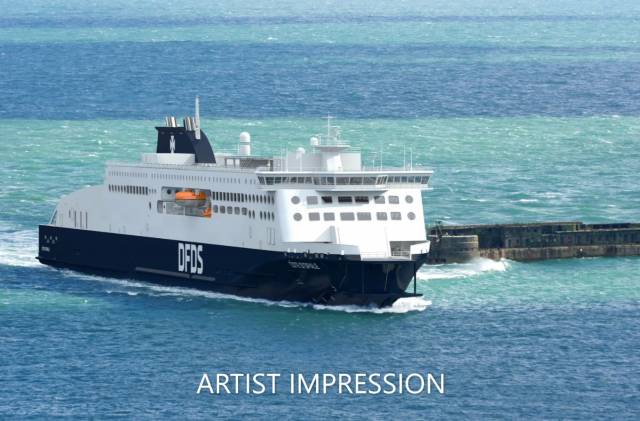Danish shipping giant DFDS, has announced the name of their new ferry Côte D'Opale which is due for English Channel service between Dover and Calais in 2021.
The newbuild is named after a region of France that overlooks the English Channel. The Côte d'Opale is a French coastal region bordering Belgium, situated opposite the cliffs of the south-east of England.
Côte D'Opale yesterday started its journey with the first steel plates being cut in the traditional steel cutting ceremony. The vessel is being built at the AVIC shipyard in Weihai, China and will be launched for operation in 2021 on the Dover Calais route. It will be the longest ship on the channel with capacity for 1,000 passengers and crew.
The emphasis has been to provide customers with the best possible service and experience on board each and every day. Earlier this year DFDS put extensive investment into ensuring their ships are the best in meeting customer's needs, with investing in a substantial fleet renewal programme to ensure continued growth. Improving the customer experience with passenger comfort, children's play area, familiarity and dynamic food concepts at the forefront in the design process. Also offering WiFi, children's play area and easily accessible outdoor space.
Further development of the modern sea travel experience will be replicated over time across the fleet on the English Channel, which will bear a familiar resemblance to the Côte d'Opale. Further enhancing the best possible customer experience that DFDS has to offer, regardless of which vessel customers sail on.
Kasper Moos, Head of Short Routes and Passenger in DFDS said "We have great pleasure in announcing our new ship will be named the Cote D'Opale and the steel cutting marked a very special and exciting time as the ship starts to take shape in the construction process. The Côte D'Opale will give our passengers a relaxed travel experience with modern food concepts and the largest shopping experience on the channel. We continue to have a clear focus on our customers and take great pride in continually seeking improvements to ensure those special memorable experiences of travelling with DFDS.''






























































